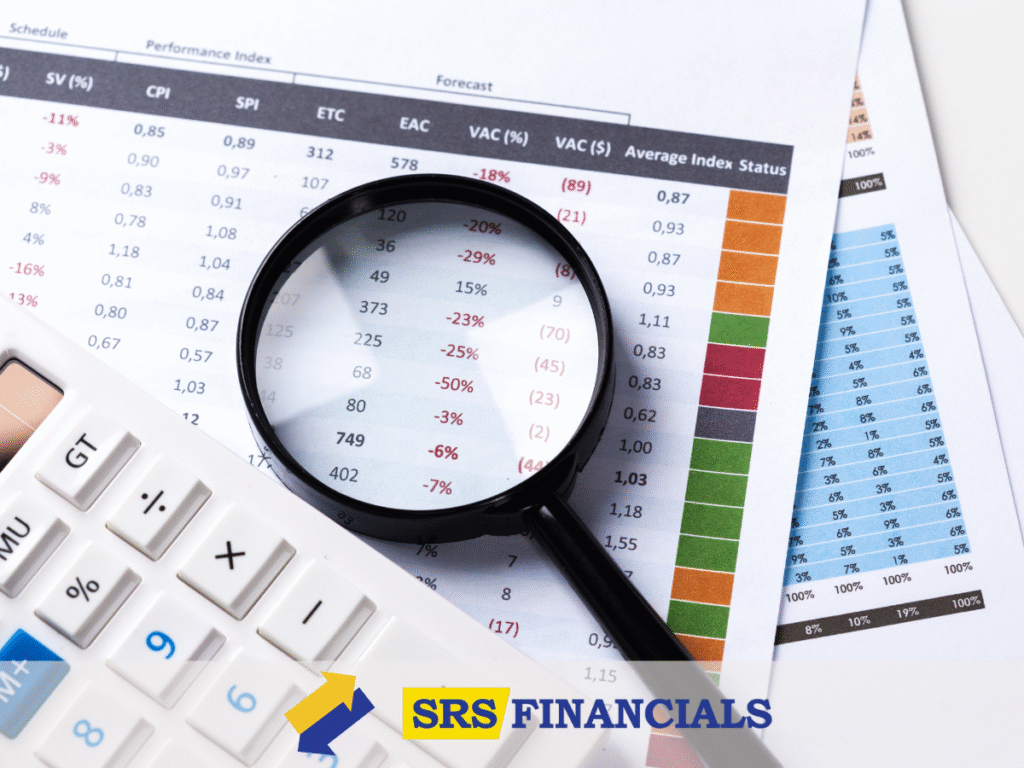Looking for clear financial guidance? At SRS Financials, we make finance easy to understand. From payroll help to tax planning, our experts guide you every step. Get in touch today for smart money solutions.
What Does YTD Mean
When you see YTD on a paycheck or financial report, it might confuse you. YTD stands for Year to Date. It is a simple way to show totals from the start of the year until today.
This small three-letter word is very important in payroll, finance, accounting, and investments. Let’s break it down in simple words.
What Does YTD Stand For
The abbreviation YTD means Year to Date. It counts the total of money, hours, or numbers from January 1st until the present date.
For example, if today is July 1st, the YTD amount includes everything from January to July.
What Does YTD Mean on a Paycheck
When you look at your paycheck or payslip, you will see a section called YTD earnings. This shows the total money you earned from the beginning of the year.
You may also see YTD deductions. This shows how much tax, insurance, or retirement money has been taken out since January.

YTD Earnings and Wages
YTD earnings means the total amount of money you received before any deductions. This is also called gross pay.
YTD wages may include your salary, overtime, and bonuses. It helps you track your income during the year.
YTD Deductions on Payslip
On your payslip, YTD deductions show the total taxes and other amounts taken out. It may include:
Income tax
Social security
Health insurance
Retirement contributions
This helps you understand where your money is going.
YTD Gross Pay vs YTD Net Pay
YTD Gross Pay is the total before taxes and deductions.
YTD Net Pay is the total after all deductions are removed.
This way, you can see both what you earned and what you actually take home.
YTD in Finance
In finance, YTD shows totals like YTD income, YTD profit, or YTD revenue. Businesses use it to check how much money they made so far this year.
For example, if a company earned $500,000 from January to August, that amount is called YTD revenue.
YTD in Accounting
Accountants use YTD statements to prepare tax reports and balance sheets. YTD helps them compare performance between months and quarters.
It is also used to track YTD expenses, YTD balance, and YTD utility costs.

YTD vs MTD
YTD means totals from January 1st until today.
MTD means totals only from the start of the current month until today.
For example, if it is August 20th, YTD covers Jan–Aug, while MTD covers Aug 1–20.
YTD vs QTD
QTD means Quarter to Date. It counts from the start of the current quarter until today.
So, YTD is bigger and covers the whole year, while QTD only covers three months.
YTD in Business Reports
Companies often show YTD reports to check sales, revenue, or spending. These reports help managers see if the company is growing.
For example, if sales were higher YTD this year compared to last year, it means the business is doing better.
YTD in Investments
Investors use YTD stock performance to see how a stock is doing from the start of the year.
If a stock was $50 in January and is $70 in September, the YTD gain is $20. This helps people decide where to invest.
YTD and ROI
YTD shows total performance in a time period, while ROI (Return on Investment) shows profit percentage compared to the amount invested.
Both are important but measure different things.
Why Is YTD Important?
For employees, YTD helps track salary, taxes, and deductions. You can see how much you actually earned so far.
For businesses, YTD helps check financial growth and make smart decisions. It also helps with planning budgets.

YTD and Payroll Taxes
Payroll reports show YTD taxes, which include income tax, social security, and Medicare. This makes it easier for employees during tax season.
Employers also use YTD data to file tax forms correctly.
YTD and Benefits
YTD also tracks employee benefits like YTD 401k contributions or YTD health insurance deductions.
This shows how much money went into retirement or health plans during the year.
Personal Experience
When I first started working, I used to get confused whenever I saw YTD on my paycheck. I thought it was some complicated accounting code. Later, I learned it simply meant Year to Date, showing my total earnings and deductions since January.
One time, I was checking my payslip, and the YTD section helped me realize how much tax had already been deducted from my salary. It made things clear and actually helped me plan my savings better. Since then, I always check the YTD column because it gives me a full picture of my income.
Conclusion
Now you know exactly what does YTD mean. It stands for Year to Date and is used in paychecks, finance, and investments.
It helps employees see earnings, deductions, and taxes. It helps businesses track revenue and growth. It also helps investors measure stock performance.
Understanding YTD gives you better control of your money and financial decisions.
Frequently Asked Questions - What Does YTD Mean
What does YTD mean in finance?
YTD in finance means totals from January 1st until today. It shows income, revenue, or expenses so far.
What does YTD mean on a payslip?
On a payslip, YTD shows total earnings and deductions from the start of the year.
Is YTD gross or net pay?
It can be both. YTD gross pay is before deductions, and YTD net pay is after deductions.
What is the difference between YTD and annual income?
Annual income is your total income for the full year. YTD income is only until today.
How do companies use YTD reports?
Companies use YTD reports to check profits, compare with last year, and plan future budgets.



